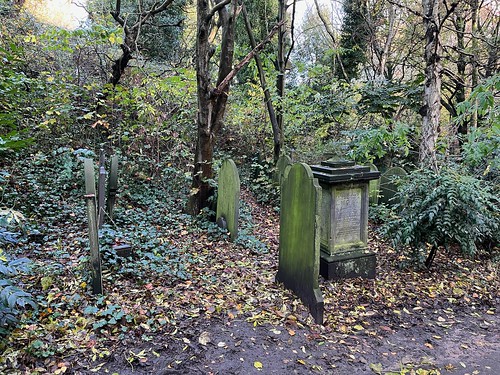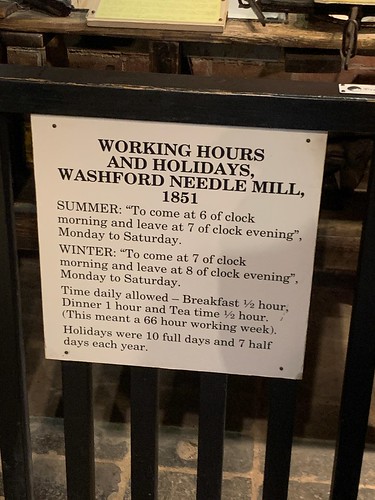Merry Christmas! I got you a blog.
When last we left our doughty blogger, she was enjoying the delights of Liverpool. And while the Beatles may be inescapable in that northern city, they aren't the only game in town. So let's rewind to the start of the visit, but skip all that Beatles stuff you've already heard about.
One of my first stops in town was trip around the grounds of St. Luke's Bombed Out Church. (I promise that's really what they call it.) Set at a prominent intersection, the church was completed in 1832 and then struck by a German bomb in May of 1941. The interior of the church was completely destroyed by the ensuing fire, but the outer walls remained standing. Derelict for many years, the now-outdoor site has been redeveloped into a community space for live performance, markets and other community events, one of which was a vinyl record sale that afforded me a chance to wander the site on Saturday morning.
Much of Saturday and Sunday was taking up Beatling, but I did have a nice wander around the nearby Georgian Quarter of the city after my disappointing breakfast (about which you have already heard me rant, so I will spare you). The morning was clear and chilly and I had some time to kill and a lot of sub-standard french toast to burn off, so it seemed a perfect time to check out the neighbourhood.
The Georgian Quarter is a small residential area of central Liverpool that boasts a lovely collection of Georgian streets so impressive that it's frequently used as a filming location. (You may have seen the Georgian Quarter in "Peaky Blinders".) It was very pleasant for a stroll and found myself humming and tripping along the streets in a very contented mood.
After a short wander, I eventually found my way to Liverpool Cathedral. The Georgian Quarter is actually the site of two cathedrals, which could hardly be more different. The more modern of the two - the Roman Catholic Liverpool Metropolitan Cathedral - is popularly known as Paddy's Wigwam, for reasons that will be obvious to those who follow this link. I did not elect to visit that spot. However, the Anglican cathedral was definitely worth a visit, being the largest cathedral in Britain, and the 8th largest church in the world. (Other size-related facts of note: Liverpool Cathedral is the longest in the world, and the 5th largest by volume. So by whatever metric you use, the place is a behemoth.)
The cathedral is also surrounded by a very nice cemetery garden which I walked through. The cemetery and gardens lie in a sunken area around the cathedral site that makes the building itself even more imposing. Their sunken-ness is because the site is a former 18th century stone quarry from which the stone for many of Liverpools public buildings was cut. It became Liverpool's main cemetery between 1825 and 1936.
I also took some un-blog-worthy photos of a chalybeate spring coming out of one of the high cut banks surrounding the gardens. What is a chalybeate spring, you say? It's a natural mineral spring containing iron salts of course! Rather you should ask how one PRONOUNCES chalybeate, because I can virtually guarantee it's not what you expect. Certainly not CHAL-ee-beet, as you might think. Ho ho, of course not! Not in a country where Cholmondeley is pronounced CHUM-lee. How do we pronounce chalybeate? Kuh-LEE-bee-utt. Yup. I know. Don't bother questioning. Let's just move on, while slowly shaking our heads.
The reddish sandstone and the light coloured mortar give the whole place an unusual stripey appearance, like the columns are wearing jolly socks. And as you can see it's just HUGE. And despite it's quite traditional appearance, it's a relatively modern building. started in 1904 and not completed until 1978 (!). The arches are apparently the largest Gothic arches ever built, and the pipe organ is the largest in the UK (with a staggering 10,268 pipes. How is that even possible?). More exciting still, it also has the world’s highest and heaviest ringing peal of bells, housed in the monumental central tower. Even better, you can buy a ticket to ascend the tower and view Liverpool from above. Even EVEN better, there are lifts, for the comfort of both bell-ringers and tourists.
Other than the cathedral, I visited a lesser-known and more down-at-heel Liverpool site, the (formerly) grand Adelphi Hotel. Situated very near the main railway hub, Lime Street Station, the present Adelphi is the third hotel to occupy the site and is a Grade II listed building completed in 1914. It's very much in the grand tradition of railway hotels, which also extended to Canada, as Asute Go Stay Work Play Live readers will of course recall. (The second iteration, which opened in 1876, was for a time regarded as the most luxurious hotel in the UK outside of London, boasting, along with standard-issue sumptuous dining rooms and lavish guest suites, a set of heated tanks in the basement for keeping live turtles to be used in the making of fresh turtle soup. That's proper decadence.) (Also a bit creepy.)
A colleague recommended I check out the hotel, with the caution that I must not, under any circumstances, consider patronising the Adelphi as an actual overnight guest. The public rooms were worth a visit, but the quality of the guest rooms, and the service in general, has fallen to a precipitous degree since the days of fresh turtle soup.
Closer inspection showed just how poorly maintained the place is. The furniture was an odd and bedraggled collection, and the skylights appear to have last been cleaned when Margaret Thatcher was in office. Given that rooms for the night go for as little as £38, I can't imagine they're pushing the boat out there either. Indeed, that seems to be borne out by this investigative video.
I foolishly tried to get a cup of tea, and maybe a bit of cake, based on the advertised flyer stating that afternoon tea was available, but despite wandering through several public rooms I could find no evidence of service, at which point it became clear that the correct move was a tactical retreat to the pub. Of course. Following that diversion (to the Philharmonic Dining Rooms, about which you've already read), I finally made my way back to the scene of the previous night's disappointment to try, once again, to sample the famed local delicacy, scouse.
Liverpool is famous for its scouse, so much so that the residents are affectionately and proudly known as Scousers and the Liverpool accent is also called scouse. (And happily, scouse is pronounced exactly as you'd expect: sKOWs.) And here I'm required by UK law to mention that scouse is a contraction of 'lobscouse', which, despite the fact that it's a traditional stew eaten by sailors in northern Europe, has absolutely nothing to do with lobsters.
I realise now that I actually had very little idea what scouse was, so I'll admit to being slightly disappointed to discover it's nothing more than a bowl of beef (or sometime lamb) stew.
What was delightful was that this bowl of traditional scouse - beef, onion, carrot and potato - tasted exactly like the beef stew my mom used to make. I suppose when you combine those particular ingredients in a big pot and add stock and time the result is always going to end up tasting the same, wherever you make it and whatever you call it. So while it wasn't a new and exciting food, it was still a very pleasant and satisfyingly homey dinner for a cold night, and a fitting end to my time as a tourist in Liverpool.
And now I'm tucked up on the boat in the middle of a cold snap. There's ice on the canal basin and the coal stove is belting out heat. I've also recently invested in an electric blanket, which is a REVELATION. Don't get me wrong - I'm still a big fan of the classic hot water bottle, and use that frequently to combat icy toes. But having the ability to pre-heat the bed to toasty perfection before getting in at night is utterly delicious and still makes me squeal out loud with delight when I snuggle in. These days, when the temperature has been solidly below freezing for days on end, I even leave the blanket on all night at the lowest setting, which is very cozy indeed. It's not done wonders for my electricity consumption, the price of which has more than doubled recently (thank you, cost-of-living crisis) but it's cheaper than a space heater and much more efficient. It's also still disspiritingly cold when I get home after a long day away - usually in the 3-9 degrees range - but such is the price we boat people pay. (Along with the price of the new starter motor and the impending new alternator, new battery disconnect switches, new leisure batteries (x5!) and whatever else comes along.) Not for the faint of heart, that's all I'm saying.

























































